Quick Links
Digital ad spending is expected to reach a whopping $571.16 billion in 2022. Marketers, ad agencies, and brands spend thousands of dollars to make the right impression on their target audience.
With so much money on the line, it’s important to see if your ad campaigns are actually effective — are they generating the desired revenue? Are they driving conversions? Or aren’t they creating the expected impact?
Return on ad spend (ROAS) is a critical metric that is used to measure advertising campaign performance. It indicates how much revenue your ad campaign is generating and is a key marker of a successful campaign.
In this article, we will explain what ROAS is, how it differs from ROI, how to calculate it, what a good ROAS is, and give you seven expert tips on how to maximize your ROAS.
What Is ROAS?
Return On Ad Spend (ROAS) is a PPC metric that measures how much revenue a single ad or entire campaign generates for each dollar you spend on that ad or campaign.
ROAS essentially measures the effectiveness of your advertising campaigns. A higher ROAS is a good sign — it means you’re squeezing more revenue out of every dollar spent on ad campaigns.
How Is ROAS Different From ROI?
Return on Investment (ROI) is a broad metric measuring the total revenue generated per dollar spent on a specific action.
ROAS is technically a subset of ROI. It’s simply the ROI of a specific ad campaign.
That said, most people use ROI to refer more broadly to a project, such as a new product.
Imagine you launch a new product. Your ad campaign generates a high ROAS, but the overall product delivers a low ROI.
This could indicate that your campaigns are effective at selling the product, but perhaps you’re not charging enough to cover the rest of your operating expenses.
On the other hand, you might have a low ROAS for an ad campaign but a high ROI on the product. This could indicate that although your ad campaign isn’t generating a lot of sales, each sale offers enough profit margin to deliver a high ROI.
Additionally, it’s worth noting that money spent on salaries and wages for advertising team members doesn’t count in your ROAS. Only the amount spent on the actual campaign is part of ROAS.
How To Calculate ROAS
Calculating your ROAS is quite simple. Divide the total revenue attributable to your ad campaign by the total cost of those ads. The resulting number represents the number of dollars you earn per dollar spent.
Here’s a formula:
ROAS = (Revenue / advertising cost)
For example, imagine you sell 1,000 units of a $20 product via ads. That puts your revenue at $20,000.
Let’s also say that you spent $5,000 total to run that ad campaign.
Plugging these numbers into our formula:
ROAS = $20,000 / $5,000
Your ROAS for this ad campaign is 4. That means you earned $4 on your ads for each $1 you spent on those ads.
Why Does ROAS Matter?
ROAS gives you an idea of how well you’re using your ad dollars. This offers you several benefits:
Better decision making
Gathering more data surrounding your ad performance helps you make more informed decisions in the future.
For example, you might score a particularly high ROAS after implementing a specific marketing angle in your ad copy. You might consider upping your investment in this marketing angle and continuing to run this campaign.
Track campaign performance
Revenue is a crucial KPI for ad campaigns because it gives you an idea of your campaign’s performance.
You may be able to look at your ROAS in real-time. This could help you report on the campaign’s performance to stakeholders on the fly. It could also allow you to make adjustments right away, instead of at the end of a campaign.
Determine campaign renewal
ROAS is one of the best metrics for determining if the marketing campaigns you run are good — and thus, worth renewing. If a particular campaign had a higher ROAS than usual, there’s no need to change things. Consider renewing it.
On the other hand, you shouldn’t renew a campaign with a bad ROAS. Scrap old campaigns and try something new.
Keep stakeholders informed
Most stakeholders — especially executives — want to know how many dollars you’re earning per dollar spent on your ads.
The same goes for partners in the business. Anyone who owns part of the business will want to make sure every dollar that’s put into growth is used as effectively as possible.
Keeping tabs on your ROAS provides them with a convenient metric that keeps them informed on how well you’re using ads to grow and can help them get an overall picture of business growth.
What Is a Good ROAS?
Like any other advertising or marketing metric, ROAS depends on the platform you’re analyzing.
For example, Jungle Scout estimates that Sponsored brand ad campaigns have the highest ROAS on Amazon, garnering $6.28 for every $1 spent.
On Facebook, a Databox survey revealed that 30% of marketers got a 6–10x return on ad spend, while around 5% said their ROAS was higher than 80x.
Google Ads is another common platform for marketers and advertisers. The average ROAS on that platform is 2:1 or 200%. That means Google Ads users, on average, double each dollar they invest in campaigns.
Many consider that the overall average ROAS for a successful campaign is around 4:1, which is $4 in revenue for every dollar spent.
Remember that these are just averages and that your actual ROAS depends on a variety of factors. A good ROAS depends on your industry, profit margins, and the average cost-per-click (CPC).
How To Improve ROAS
Improving your ROAS unlocks a lot of potential business growth. It helps you identify ad campaigns that work, letting you scale up your investment and redirect some efforts elsewhere.
At the same time, you can invest your extra revenue into other aspects of your business once you make significant ROAS improvements.
With these benefits in mind, let’s look at several ways to boost your ROAS.
1. Track the right data
First, ensure you’re looking at the correct data for ROAS.
Ignore data that doesn’t deal directly with your ads, such as marketing software costs, salaries and wages for marketing or advertising team members, agency fees, and so on.
For Google Ads, you’ll also need to pick a Google Ads attribution model that fits your needs. Each model credits the conversion to different parts of your ad funnel.
For instance, the Data-Driven model credits ad interactions based on how important they were to the conversion process. This model is the default and uses automation to take out some of the guesswork.
However, there are six others that you can choose from based on your goals and needs.
2. Lower your CPC
One way to lower CPC is to target the right audience, which helps you bring in leads that are more likely to need what you sell.
This generates more revenue but could help you score a lower CPC. This is because Google might give you a higher Quality Score, which reduces your CPC.
You can also use different bidding strategies. Different bidding strategies focus on different goals, so some may be more cost-effective than others.
3. Use the right keywords
Researching and targeting the right keywords in your ads helps you get in front of users that most closely need what you offer and will click through.
Go after long-tail keywords. These are low-volume, longer keyphrases users are more likely to use closer to the purchase.
For example, “running shoes” is a broad keyword. A long-tail version for someone interested in running might be “supportive running shoes for flat feet” — that’s very specific and indicates a higher purchase intent.
Create single-theme ad groups as well. These organize keywords by theme instead of keyword. A good example would be “trimming hair” and “cutting hair.”
Now, include negative keywords, too. These screen out irrelevant leads using similar search terms.
For instance, if you’re an orthodontist, you probably offer to install braces on your patients. You might consider adding negative keywords like “arm braces” or “elbow braces” — both use the word “braces” but are a different type of product entirely.
4. Focus on bottom-of-funnel keywords
The bottom of the funnel is where the customer buys.
Focusing on bottom-of-funnel keywords in your PPC ad campaign helps you target these customers and nudge them toward the sale.
This can improve your campaign’s ROAS by increasing the chance any given lead buys from you.
That means more revenue for you per dollar spent, boosting your ROAS.
Make sure you target some branded keywords here. Some customers may be looking directly for your brand or products, basically guaranteeing the sale if you serve ads to them.
5. Use landing page best practices
Getting a high number of clicks on your ads won’t matter much if your landing page doesn’t convert those leads into sales.
A key piece of a high-converting landing page is getting all the important stuff “above the fold,” meaning the visitor can see it all before scrolling.
This minimizes the chance of a user clicking away or getting distracted and failing to convert.
Here’s a good example:
This business has a headline, persuasive bullet copy, and a CTA form all above the fold. This reduces the amount of work the user has to do to convert.
Throughout the page, use bite-sized, easy-to-read copy. Include a section briefly explaining the benefits, and sprinkle in testimonials for social proof.
Lastly, make sure you optimize your landing page for mobile. The majority of global traffic is now mobile, so getting mobile-optimized is critical.
6. Do conversion rate optimization on your landing pages
Conversion rate optimization involves routinely testing and tweaking your ads to try to improve your conversion rate.
This starts with personalizing the customer journey. This helps you tailor ads more closely to each customer, increasing their chance of converting from an ad.
After that, optimization never truly ends. Markets change, and customer preferences shift. You should periodically update that customer journey. Plus, you need to do regular A/B testing — basically, test your current ads against new ones to see if you can boost your conversion rate.
7. Increase revenue per conversion
Generating more revenue from each lead means more dollars from that lead per dollar spent to get them.
This starts with tailoring ad campaigns. The better your targeting and messaging, the better customers you’ll get. They will fit your brand better, meaning they might want or need more of what you sell.
There are some tactics you can use post-click as well.
For example, you can try to bundle offers together. Find products or services that complement each other, then sell them together with a bundle discount.
Another post-click tactic is upselling. When a customer adds something to their cart or is on the checkout page, you can put another offer in front of them that makes sense for the product.
For instance, say you’re a fitness supplement company. Someone adds protein powder to their cart. You could upsell them on a subscription to regular protein powder deliveries. Alternatively, you could upsell them on buying a bigger container.
Regardless, you’re getting more revenue per ad by upselling.
Grasp Your Ad Performance With ROAS
ROAS is one of the most vital metrics to track if you’re advertising online. It helps you screen out ad and campaign ideas that don’t work while reinvesting more ad dollars into those that do work.
Although there are too many factors to nail down a “good” ROAS, you should always be looking for ways to improve after establishing a baseline.
That’s where The HOTH can help. We can handle every aspect of your PPC campaign, maximizing your ROAS while letting you get back to what you do best. Schedule a call today to see how we can help.




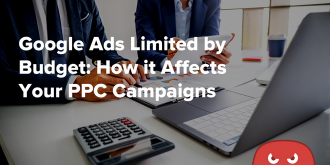

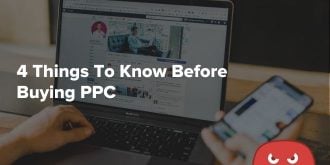
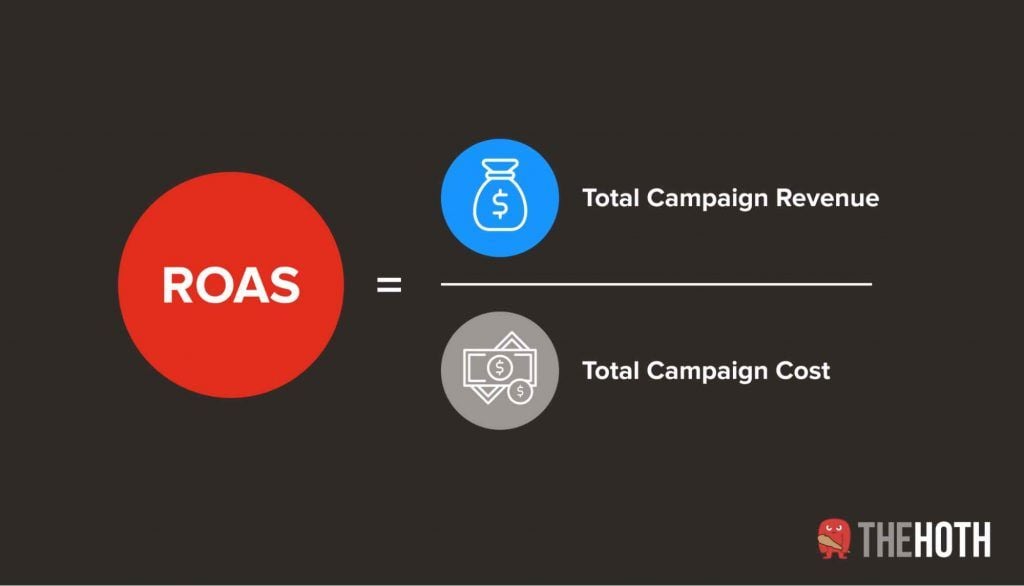
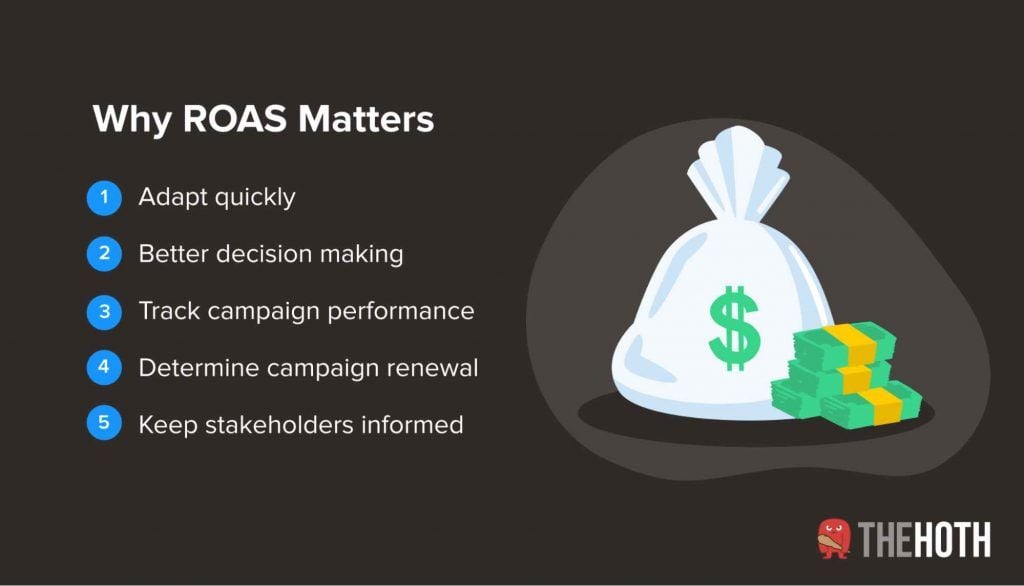
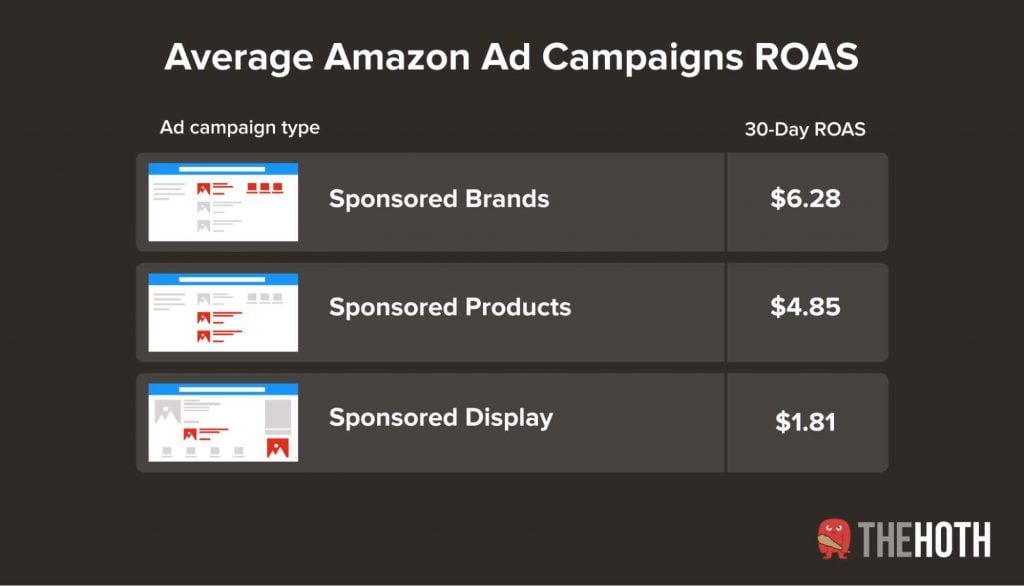
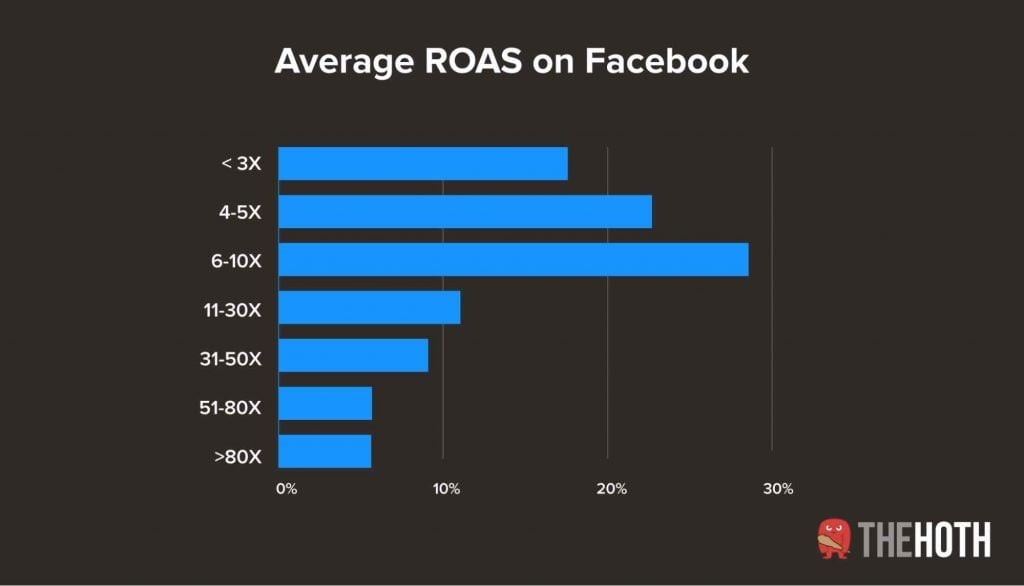
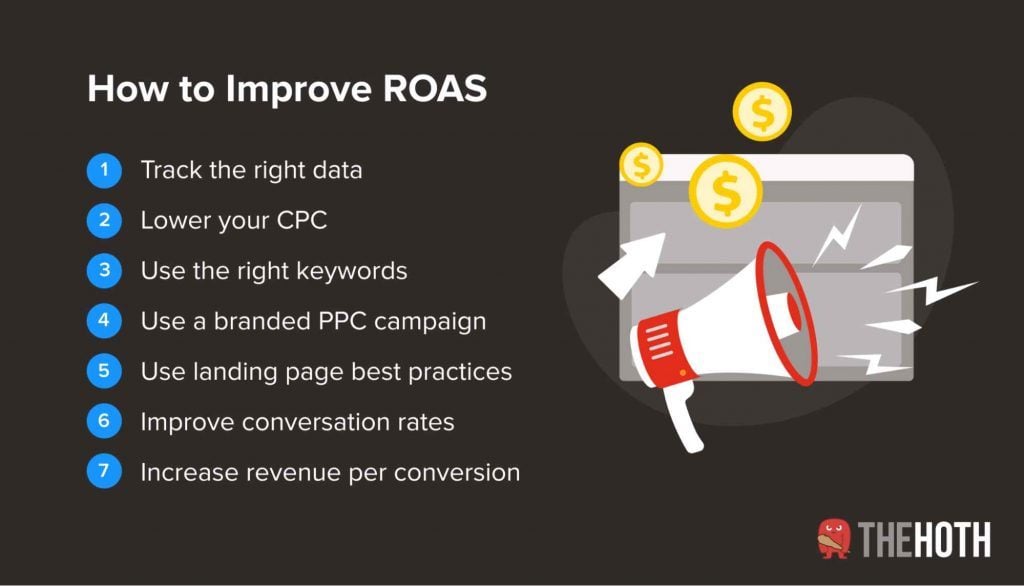
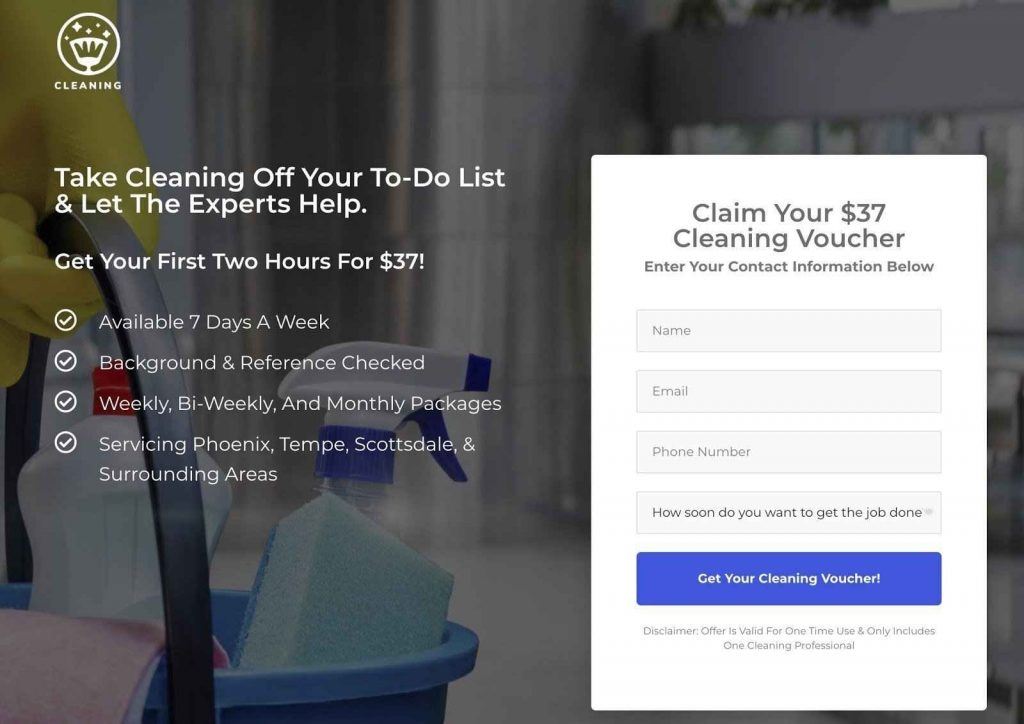


Thanks for these ROAS tips.